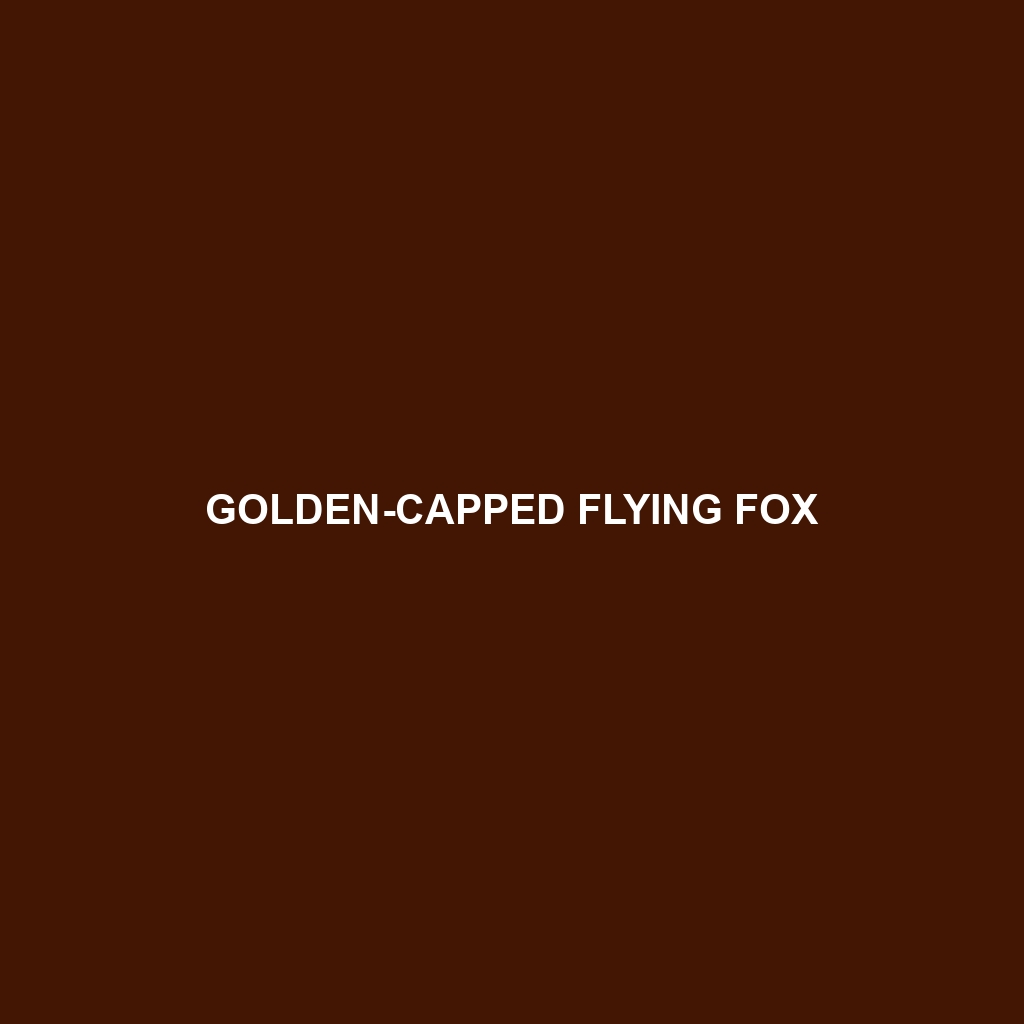Golden-capped Flying Fox (Scientific Name: Pteropus fiebrellae)
Scientific Name: Pteropus fiebrellae
Habitat: The Golden-capped Flying Fox is primarily found in the tropical forests and coastal mangroves of Southeast Asia, particularly in countries like Indonesia and the Philippines. This species prefers humid environments with plenty of fruit-bearing trees, often inhabiting lowland forests and the fringes of urban areas where they can forage easily.
Physical Characteristics: The Golden-capped Flying Fox typically has a wingspan of up to 1.5 meters (about 5 feet) and weighs between 400 to 700 grams. Their most distinguishing feature is their golden-brown fur on the head and shoulders, which contrasts sharply with the darker, almost black fur covering the rest of their bodies. They have large eyes aiding their night vision and long, flexible wings that allow for graceful flight.
Behavior: These bats are nocturnal and are known for their social behavior, often roosting in large colonies that can number in the hundreds. They communicate through a series of vocalizations, including calls and squeaks. The Golden-capped Flying Fox is also noted for its gentle disposition, which makes it an interesting subject of study among bat researchers.
Diet: The diet of the Golden-capped Flying Fox consists primarily of fruit, particularly figs, nectar, and flowers. They play a crucial role in seed dispersal, as they consume large quantities of fruit and help spread seeds throughout their habitat, which aids in maintaining biodiversity in the forests.
Reproduction: Golden-capped Flying Foxes typically breed between September and October, with females giving birth to a single pup after a gestation period of about 4 to 5 months. Mothers are very nurturing, often carrying their young while foraging for food. Pups usually become independent around 6 months of age.
Conservation Status: Currently, the Golden-capped Flying Fox is listed as Vulnerable by the International Union for Conservation of Nature (IUCN). Habitat loss due to deforestation and hunting pressures have significantly impacted their population, making conservation efforts critical to their survival.
Interesting Facts: One fascinating aspect of the Golden-capped Flying Fox is its exceptional roosting behavior; they are known to form large, mixed-species colonies with other bat species. Additionally, their role in pollination and seed dispersal is vital for many plant species, highlighting their ecological importance.
Role in Ecosystem: The Golden-capped Flying Fox serves as a critical component of its ecosystem. They are vital pollinators and seed dispersers, helping to maintain the health of tropical forests. As they consume various fruits and nectar, they facilitate the growth and propagation of numerous plant species, fostering biodiversity and ecological resilience in their habitats.
